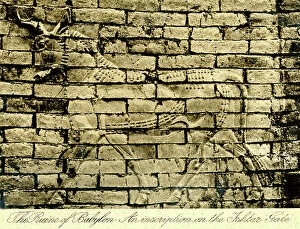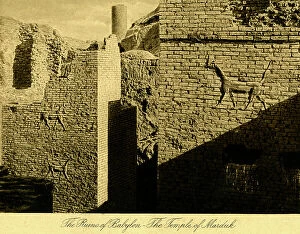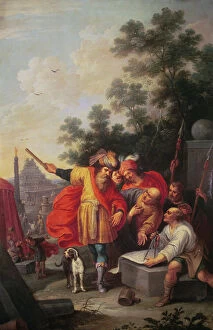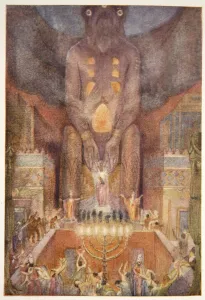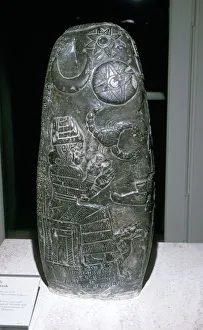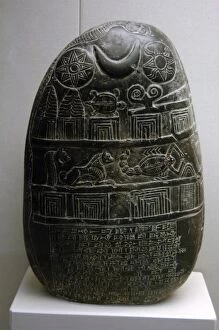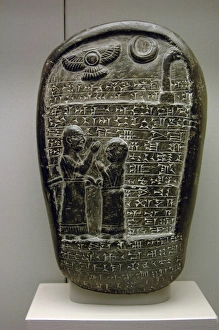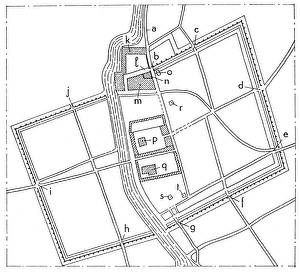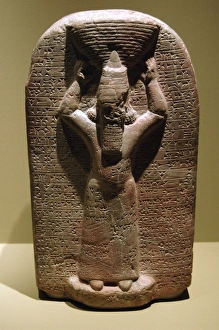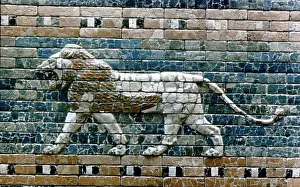Marduk Collection
"Marduk: The Mighty God of Babylonian Mythology and Power" Marduk, the powerful deity of ancient Mesopotamia
All Professionally Made to Order for Quick Shipping
"Marduk: The Mighty God of Babylonian Mythology and Power" Marduk, the powerful deity of ancient Mesopotamia, held a prominent place in the hearts and minds of the Babylonians. From intricate stone stelas to captivating oil paintings, Marduk's influence is evident throughout history. One such artifact that showcases Marduk's significance is the Eanna-shum-iddina kudurru, a commemorative stone stela from the Kassite Dynasty. Dating back to 1125-1100 B. C. , this piece represents the enduring legacy and his worshippers. In another depiction titled "The Construction of the Tower of Babel, " we witness Nimrod engaging with architects under Marduk's watchful gaze. This oil on canvas painting captures both Marduk's divine presence and his association with architectural prowess. Illustrations from Lewis Spence's book "Myths and Legends of Babylonia and Assyria" further highlight Marduk's grandeur. One lithograph portrays him as mighty in appearance, while another depicts sacrificial rituals dedicated to Bel, showcasing devotion towards this revered god. Cuneiform tablets also provide insight into religious practices surrounding Marduk. A clay tablet containing a Hymn to Marduk from the 1st millennium B. C. Reveals how he was praised through written words by devoted followers. Artists like Evelyn Paul captured Marduk's awe-inspiring nature through their work. His illustration titled "Mighty was he to look upon" beautifully brings forth an image that matches descriptions found in ancient texts. Additionally, Ernest Wellcousins' artwork portrays Merodach (another name for Marduk) preparing for battle against Tiamat - a testament to his role as a warrior god who defended creation against chaos. A commemorative stela discovered at the Temple in Babylon further solidifies his importance.


